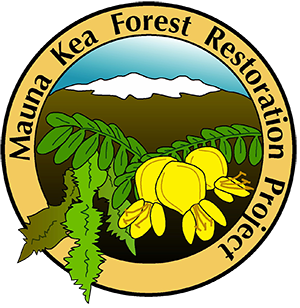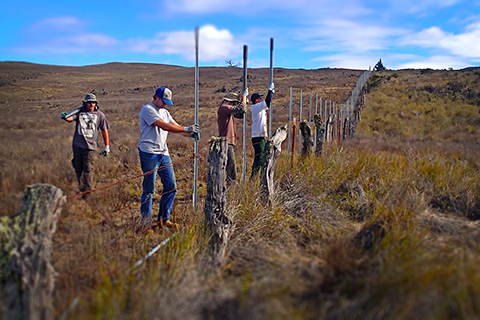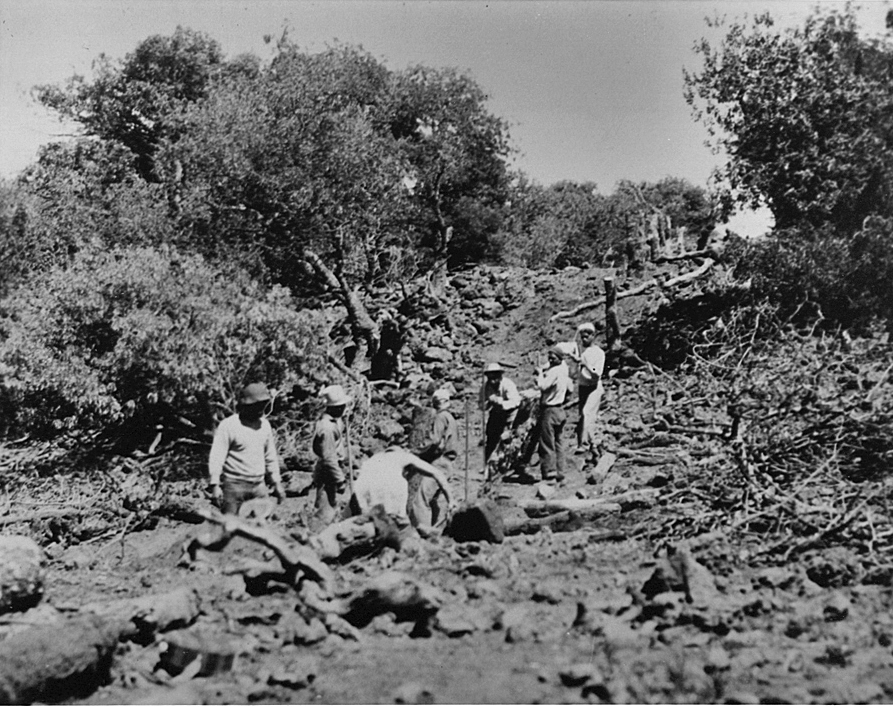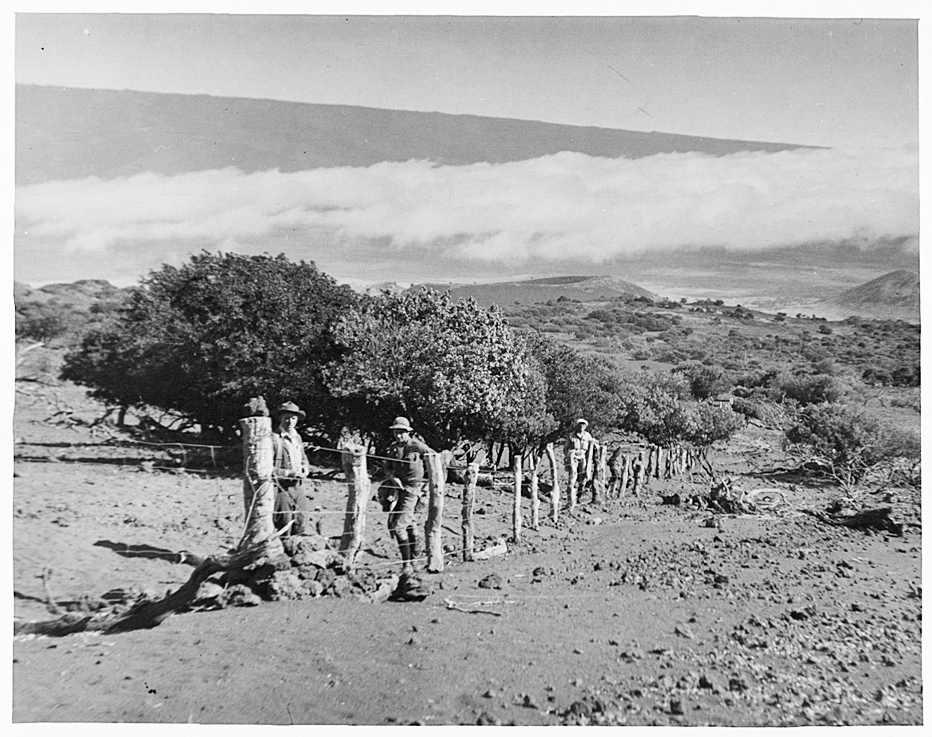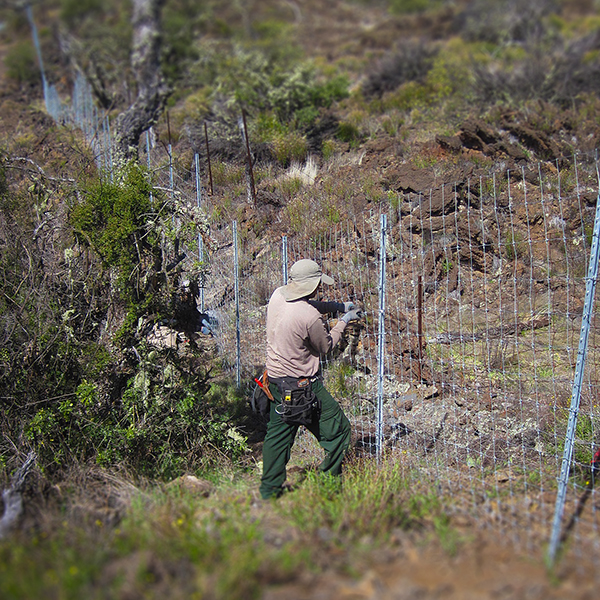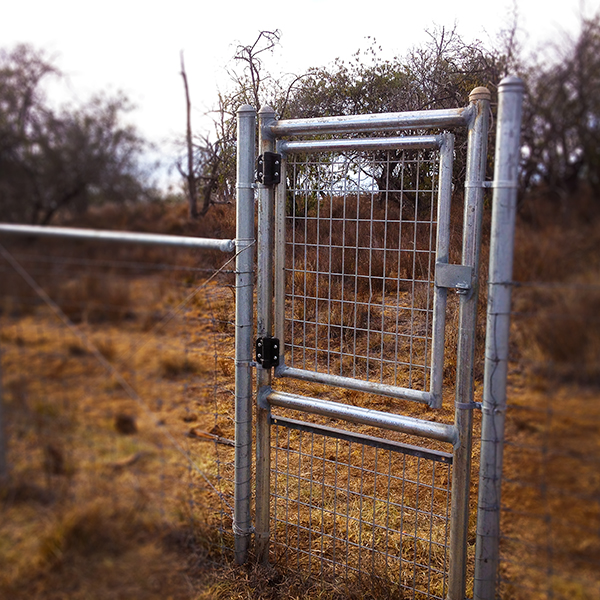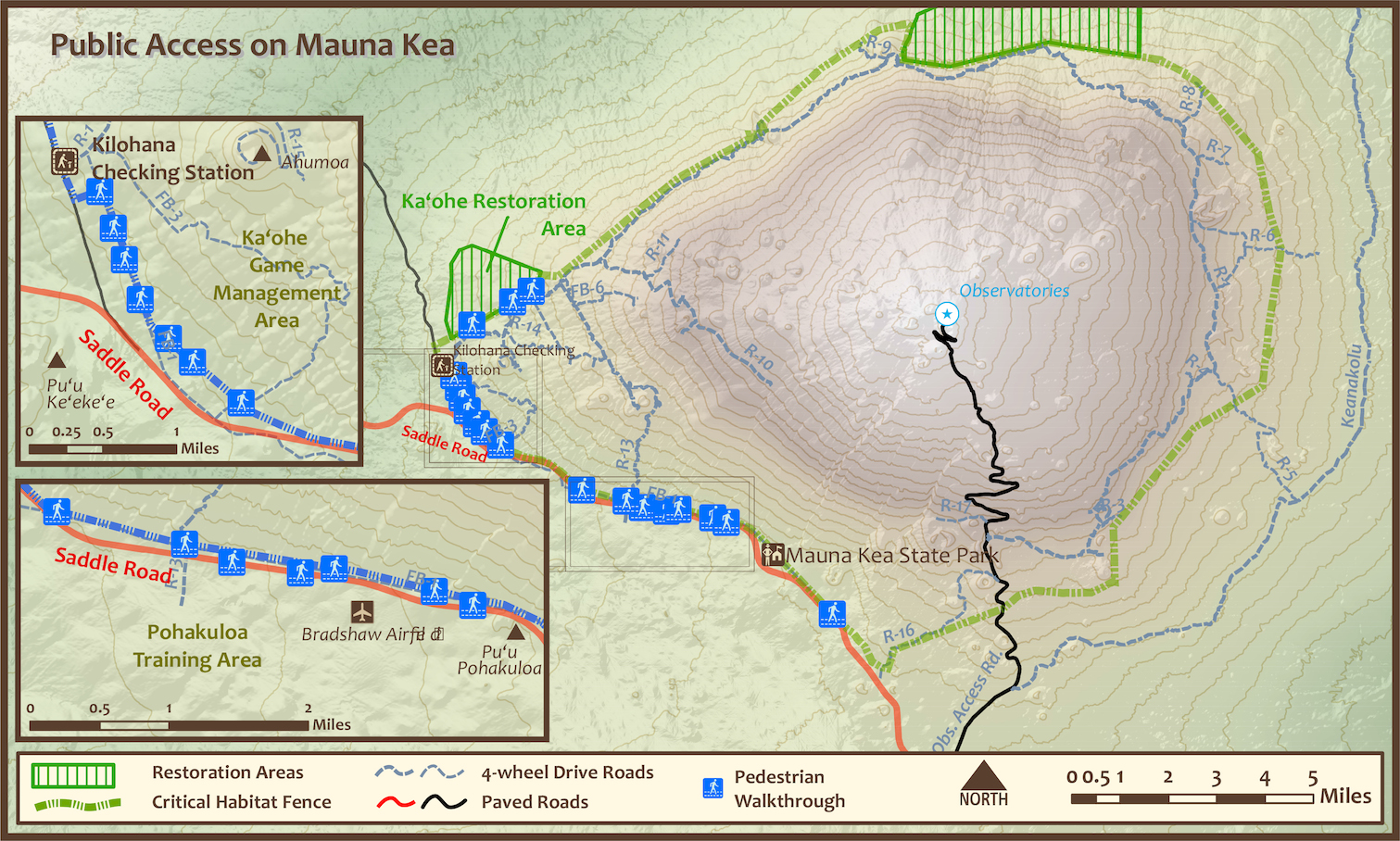Management
After centuries of negative impacts from introduced animals, insects, and invasive plants, the high-elevation forest of Mauna Kea and its wildlife need our help. With intensive management by partnerships with the State and Federal governments, non-profits, and volunteers, the forest will be protected for generations to come.
|
The Big Fence Around Mauna Kea
The first watershed protection fence was completed in 1937 by Territorial foresters and the CCC. Once the 1937 fence was built, 47,000 sheep were removed from the Forest Reserve.
1937 Mauna Kea Forest Reserve Boundary FenceThe Territorial Division of Forestry intensified efforts to eradicate feral sheep from the Mauna Kea Forest Reserve in the 1930s after noticing a lack of natural regeneration and damage to māmane trees caused by sheep. With the help of the Civilian Conservation Corps (CCC), territorial foresters built a 55-mile fence around Mauna Kea in 20 months. It was 4.5-foot tall galvanized stock wire stretched between large māmane posts. The completed fence enabled territorial foresters on horseback to drive sheep and herd them into pens. In one drive near Kemole, they captured and killed over 3,000 sheep in a day. Territorial foresters removed nearly 47,000 sheep and 2,200 other non-native browsing animals from Mauna Kea during the 1930s and 1940s. It is likely that the palila would not be here today if not for these efforts due to the highly degraded condition of the forest at the time.
Palila Critical Habitat FenceTo address the stipulations of the 1998 court case, Palila vs. DLNR, construction of a new 6-foot tall fence was initiated in 2010 to protect palila critical habitat (PCH). This was necessary because the original fence built in 1937 had ceased to be an effective barrier decades earlier. Twenty-four miles of fence have been completed by March 2013 which now eliminates movement of non-native browsing animals into PCH from adjacent lands containing the highest densities of such animals. DLNR plans to start construction of the next nine miles of fence in 2014. Afterwards, the final five miles of fence will be build which will enclose the entire mountain and eliminate movement of non-native browsing animals into PCH. To encourage continued public use and access above the PCH fence to the Mauna Kea Forest Reserve and Ka‘ohe Game Management Area, 4×4 vehicles are still able to drive the network of dirt roads on Mauna Kea and 17 pedestrian gates were also installed.
A new 6-ft. tall fence replaces the original 1937 fence. Over 17 new pedestrian walk-through gates have been installed along the new fence.
|
